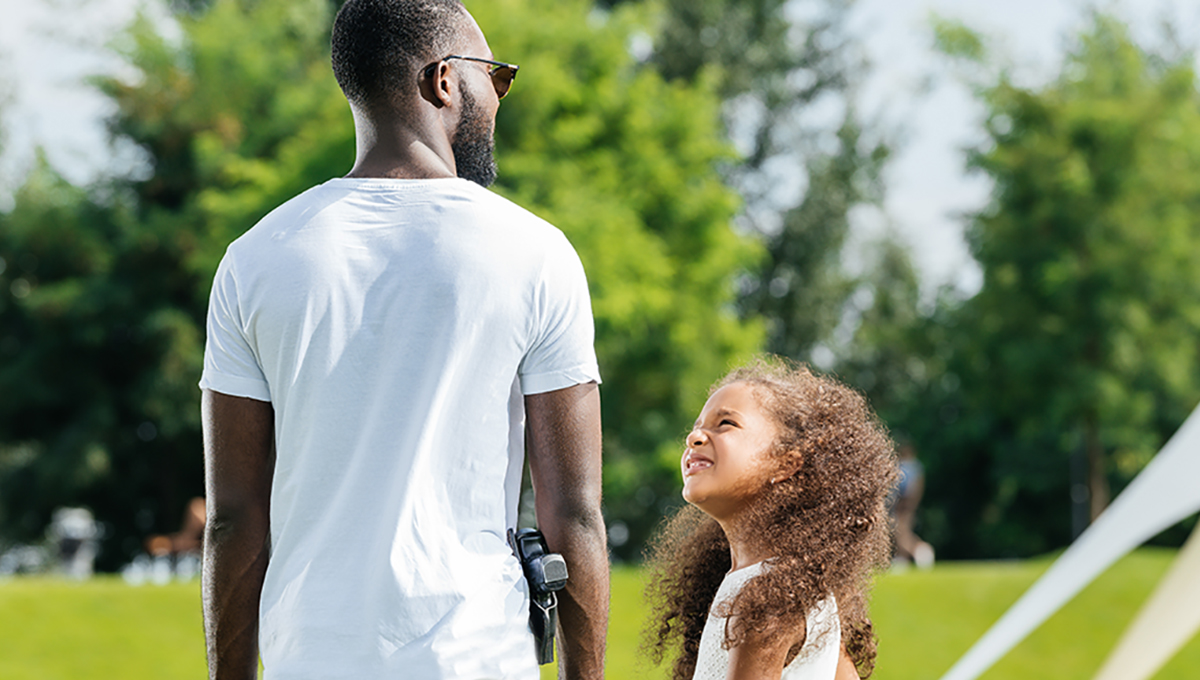by LJ Bonham
As more states transition to either Constitutional carry, i.e. no permit required, or lawful open carry, more U. S. citizens than ever before now openly carry firearms in public. This has advantages and disadvantages. The main advantage is the proven deterrent effect lawfully armed citizens have on criminals. The main disadvantage is many gun owners have jumped on the open carry band wagon without careful consideration as to the potential pitfalls. There are five questions a citizen who open carries should address before exercising their Second Amendment rights.
The author asked Air Force security veteran, law enforcement officer, and Colorado POST All Skills firearms instructor, Tim Hightshoe, about these issues. He had some important things to say about open carry, based on decades spent training both police and civilians to defend themselves, which legally armed citizens should heed
1. Does open carry make me a high-value target for criminals?
Short answer, yes. While most people go about their day with little attention paid to their surroundings, many criminals intent on unlawful acts are hyper-aware. Their adrenaline flows as they anticipate their next move, and they may have ingested stimulant drugs. They are on the lookout for anything, or anyone, which may interfere with their plans.
Tim Hightshoe says, “A person looking to rob an establishment may choose to shoot anyone who can obviously resist their efforts and if you are carrying openly–you’re carrying a neon sign. Also, by carrying open, you will attract, in some cases, unwanted attention from all sides: law enforcement, ordinary citizens, and criminals.”
Lawfully armed citizens must keep these facts in mind, and have a pre-determined response for each potential scenario which they have rehearsed and are prepared to implement on a moment’s notice.
2. Do I have weapon retention training from a qualified instructor?
It is vital for open carry practitioners to have at least basic training on recognizing potentially dangerous situations and how to retain positive control over their weapon should a criminal attempt to disarm them.
“True weapon retention training is important, but not as important as quality instruction on environmental awareness.” According to Mr. Hightshoe. “Environmental awareness is critical. Many self-defense instructors pay lip service to situational awareness but seldom touch on the real issues.”
Armed citizens should ask any potential instructor detailed questions about their background and training methods before receiving any instruction. Not only is your money at stake, but your life and the lives of those around you.
“Having an understanding of the environment you are in greatly reduces the chances of a gun grab and will give you heads up if one is coming. Also, get training on pre-attack indicators and stage one of an attack, this will give you time to react and maintain control of the weapon.” Tim advises.
3. Do I have a high-quality weapon retention holster?
Anyone who open carries a handgun should have a holster designed to thwart a gun grab attempt. There are many on the market, and prospective buyers shouldn’t hesitate to contact holster manufacturers about their needs and what, if any, products in that maker’s lineup fit those needs.
Here is Tim’s take on the subject. “I always recommend some form of retention holster…Retention should limit the ability of a second person to access the weapon and still allow the person carrying the weapon to do so if needed. It is far more important for open carry to have some form of mechanical retention than for concealed carry, simply because a gun grab is far more likely if they [the assailant] can see the gun.”
Mr. Hightshoe also stresses the need for proper holster fit, operation, and the image your equipment projects in public.
“Features to look for: fit to the weapon (specific to make and model), do not use a one size fits all. Insure it is covering the trigger. It should provide retention beyond just friction. It should be comfortable and stable. Lastly, it should provide a professional image if worn in the open. Image becomes critical in de-escalation and in civil liability. After selecting a holster, train with it until you are able to draw and shoot two rounds to center mass in 1.5 seconds at 7 yards.”
4. Have I considered when and where open carry is inappropriate?
Lawfully armed citizens are not a threat to society because they obey laws. However, adhering to the law’s letter is not always sufficient. Armed citizens must have an awareness and respect for society’s behavioral expectations and customs. There are places and situations where it is not a good idea to open carry a firearm, and it is up to the armed citizen to respect those limits.
Tim says, “Don’t carry anywhere it is not welcomed, or illegal. Remember they [other citizens] have rights also, and our [gun owners] rights do not trump their rights.”
Before you holster that pistol, or sling that carbine, ask yourself if where you are headed is the right place to have a firearm in your possession, especially a visible one. Remember, you are an ambassador for all gun owners in a world which all too often sees them as a problem.
Tim adds, “Other places it may not be appropriate is anywhere it might create disruption or promote a negative image of gun owners…going against social norms only tends to create resentment for the firearms.”
5. Do I know how to behave if contacted by law enforcement personnel?
As Tim alluded to earlier, an openly carried firearm will get people’s attention, and their reactions can vary from apathy to calling the police, or the police themselves may see your weapon and wish to contact you about the situation. What should you do if law enforcement officers make contact?
As an experienced law enforcement officer, Tim has some potentially life-saving advice for the open carry citizen under those circumstances.
“Don’t touch or reach for the weapon. Follow instructions. Keep your hands in plain sight and do not make sudden moves. Don’t become argumentative about your rights, and most important, don’t fail the personality test.”
“Remember, law enforcement has a hard job and a dangerous one; your rights do not superseded their right to self-defense. Carrying a weapon is a threat to their safety. The procedures they use are designed to provide safety for all, so please follow instructions.”
“Now, on the off chance you have an officer who is exceeding, or you feel they are exceeding, their authority what do you do? Again, follow all instructions. Do not resist any instruction or confiscation. After the incident, contact the officer’s supervisor or agency’s Internal Affairs Division. If you are unable to resolve the issue using this, then contact an attorney and start legal procedures against the officer and their agency. If all that fails, go to the press and social media. Most agencies are very protective of their public image. Bottom line is follow instructions, and don’t fail the personality test.”
Conclusion
We, as American citizens, have a clear, constitutionally guaranteed right to arms and self-defense, but even the country’s founders agreed rights are not absolute. Your right to swing your fist ends where the other guy’s nose begins.
Citizens who choose to go lawfully, and openly, armed in public have a greater responsibility, both under the law and in general, to conduct themselves with the utmost courtesy, safety, and vigilance. You not only represent yourself, but every gun owner in the country, so stay alert, stay smart, and stay humble. Remember, whenever you carry, either concealed or open, there will always be at least one gun in a fight–yours.
LJ Bonham is a semi-subsistence hunter, hunting magazine editor, and firearms enthusiast who lives in the Rocky Mountains.


9 Comments
Ron Bemberry
1. Who is Tim Highstone?…
And what does he do for a living?
2. Who determines or what determines that ur qualified?.. being former military that would mean I’m qualified
Kia Glenn
Hello Ron, and thank you for your inquiry. His name is Tim Hightshoe. The author of this article stated his qualifications and what he did for a living. It was stated at the top of the article. The US government determined he was qualified to do his job just as they qualified you as former military. NAAGA is filled with tens of thousands of incredibly knowledgeable members and we also have friends of NAAGA that provide their knowledge in the form of interviews and trainings.
Carl King
Personally, I do not and would not open carry. Having had CCW since 1994, I just see no need to do this. Beyond that, I have occasionally seen folks open carrying in stores, streets and other public places. This always seems to upsets folks around them- there are looks and murmurs.
Keeping that in mind, I surely would like to see folks become more comfortable with firearms, less panicky, less frightened – Open Carry in my opinion however is NOT the best way to go about this.
Jeffrey Cowell
Thanks , I really appreciate the insight of your experience, and Naaaga for this information . MY state of SC has just passed open carry even though your not going be able to openly carry for 90 days. I will not be doing that. It just doesn’t feel right to me . Thanks so much again. it was informative, Sincerly Naaga new member JEFF L Cowell
Charles Armstrong
I agree with everything that was said, but to many people think carrying a gun give them the right to do anything they want. I hope a lot of gun owners read this, and take it to heart especially us as black gun owners. Thank you for such an awesome article, and information.
Charles Armstrong
I have been a member for going on 2 years now. I have never received any things showing I am a member of the of naaga. I was wondering why. My name is Charles Armstrong I live at 1705 N Westnedge ave Kalamazoo MI 49007. I don’t have my membership card as of let. Could you please send me a membership card and welcome kit. Thank You, Charles Armstrong.
Kia Glenn
Hello Charles. We sent your inquiry to the membership department. Membership Support membership.support@naaga.com
Please let us know if this issue has not been resolved in the days to come.
Karl F
Great article!
Kia Glenn
Thank you!
Comments are closed.